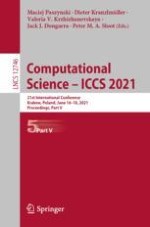2021 | OriginalPaper | Chapter
NVIDIA SimNet™: An AI-Accelerated Multi-Physics Simulation Framework
Authors : Oliver Hennigh, Susheela Narasimhan, Mohammad Amin Nabian, Akshay Subramaniam, Kaustubh Tangsali, Zhiwei Fang, Max Rietmann, Wonmin Byeon, Sanjay Choudhry
Published in: Computational Science – ICCS 2021
Publisher: Springer International Publishing
Activate our intelligent search to find suitable subject content or patents.
Select sections of text to find matching patents with Artificial Intelligence. powered by
Select sections of text to find additional relevant content using AI-assisted search. powered by
